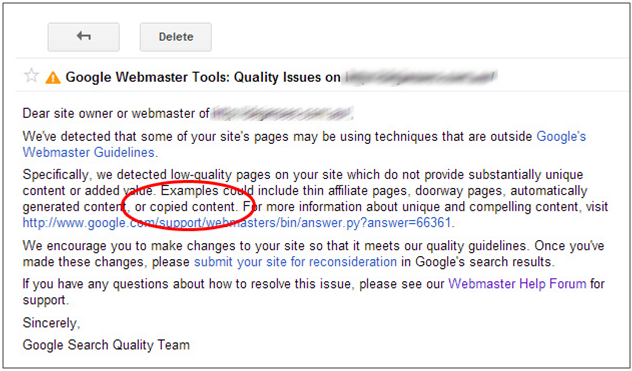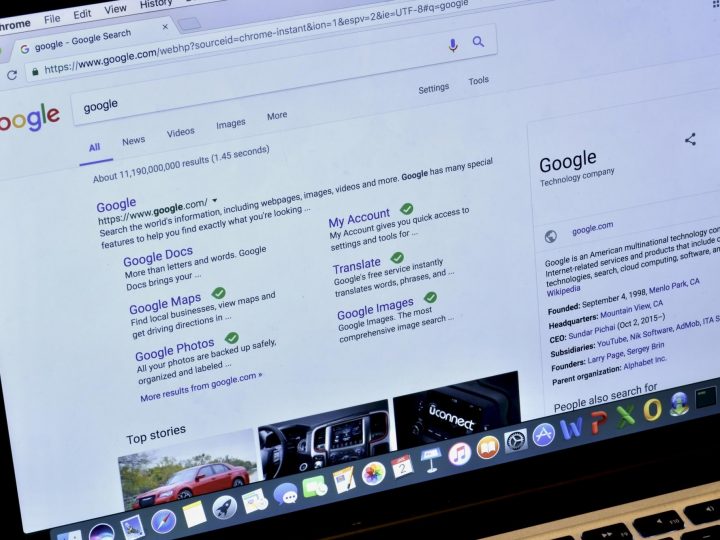
Much has been said about the importance of an effective SEO strategy for new websites to thrive online. It has been highlighted over and over how a good SEO plan ensures websites are able to promote their products and services to the largest possible chunk of their target audience. Because of this, many business owners think that doing SEO as intensely as possible is the way to go – only it isn’t. As one common proverb goes, “Too much of anything is good for nothing.”
If you do too much search engine optimization, you do more harm than good to your website. Google has been implementing over-optimization penalties since 2012.
[perfectpullquote align=”right” cite=”” link=”” color=”” class=”” size=””]The lower your website’s rank is, the less traffic and conversions you get.[/perfectpullquote]
Think of penalties like red cards in soccer; only in this case, the penalty sends your SEO efforts out of the digital marketing game. A penalty easily invalidates almost all the hard work you put in your SEO strategy, causing your website to slide down the rankings on the search engine results pages. The lower your website’s rank is, the less traffic and conversions you get.
According to a 2013 study, 92% of all search traffic goes to the first page of the SERPs. Websites outside the first page fight for only a measly 8% of search traffic – and that is a situation no site owner would want for their website.
The good news is that proper on-page SEO techniques can help you avoid such a penalty. It is important to develop an SEO strategy that follows these four tips:
1. Diversify Keywords
Search engines use keywords to identify what a specific page is about. For example, if there are several mentions of “hard drive,” “processor,” and “graphics card,” Google assumes the page is talking about computers. But sometimes, the SEO plan focuses too much on the same set of keywords over and over again. This overuse of keywords is detrimental to the site’s rankings.
You can use different tools to get keyword ideas, but I recommend using Google Keyword Planner and Siteoscope. Keyword Planner helps you get ideas for keywords to target. While most site owners use Keyword Planner for paid ads, this tool can also be useful in determining search terms that have high search volume. Siteoscope can show the performance of your target keywords, so you can compare and find ranking opportunities.

Let’s say your SEO strategy focuses on the keyword “best desktop computers.” Mentioning this keyword in its exact form too many times would get the content flagged. Rather than say “best desktop computers,” try “top desktop computers” or “highest rated desktop computers.” Google’s bots have a basic understanding of the meaning and context of search queries, so making variations of your keywords is acceptable.
2. Create Unique Content
One of the most important on-page SEO techniques is the creation of unique content. Redundancy is not good when it comes to content. It should be the goal of every webpage to provide value to users. If there are two pages that achieve the same purpose and have identical content, Google considers that as overdoing SEO and tags the pages with duplicate content — nobody wants to see two pages that say practically the same thing.
For instance, if a website has a page for “cheap used cars,” there is certainly no need to create a separate page for “affordable second-hand cars.” If there are overlapping or redundant pages, condense these into one. If there is a page with content taken from another website, practice proper attribution and/or use canonical URLs to avoid running into any issues.
The last thing you want is to receive a duplicate content penalty from Google:

3. Keep Tabs on Links
Apart from keywords, search engines look at hyperlinks to determine what a page is about as well as how high it should rank on the SERPs. This means every link should be relevant to the content. If the content is about fashion, there is no point for it to have a link to an article about engineering. Useful hyperlinks there would be content on shoes, runway walks, and couture.
Another SEO technique that helps you avoid over-optimization is to check the quality of the links. The links should point to credible and reputable websites, such as news sites, academic institutions, and professional organizations. Search engines give these websites more premium as opposed to other, less prominent ones.
Paid links are something Google has been adamant against for quite some time now, so refuse hosting those. Do not clump up links together in one area of the content; spread it out. Just like in content, avoid duplicate links.
When monitoring links, Siteoscope can show you a quick view of your backlinks – the backlinks of your competition, a breakdown of your links, and the anchor text used on your website.

4. Measure Progress
Every decent SEO strategy for old and new websites alike puts emphasis on measuring progress. Analytics are at the core of SEO. It is important to keep track of how well (or otherwise) specific aspects of the campaign are doing. Is the content driving enough traffic? Are the keywords competitive enough? How healthy are the backlinks? The answers to these questions are always in the data – and these answers are useful in gauging whether or not you are doing enough for the SEO campaign.
Checking the numbers is also useful in plotting out the time frames for your SEO plan. The practice allows for an easier assessment as to when the next phase of the strategy should be implemented. You can use Google Analytics, Search Console, and other tools (Siteoscope, included) to measure the key metrics of your website.
Over-optimization is a problem every site owner can avoid. With these useful website tips, it becomes easier to draft a plan that does SEO the right way.




